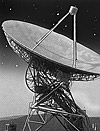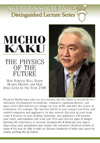In this week’s eSkeptic:
Next at Caltech: Annie Jacobsen
Area 51: An Uncensored History of
America’s Top Secret Military Base
Sunday, October 2, 2011 at 2 pm
Baxter Lecture Hall, Caltech
IT IS THE MOST FAMOUS MILITARY INSTALLATION IN THE WORLD. And it doesn’t officially exist. Located a mere seventy-five miles outside of Las Vegas, the base has never been acknowledged by the U.S. government. Myths and hypotheses about Area 51 have long abounded, thanks to the intense secrecy enveloping it. Some claim it is home to aliens, underground tunnel systems, and nuclear facilities. Others believe that the lunar landing itself was filmed there. The prevalence of these rumors stems from the fact that no credible insider has ever divulged the truth about his time inside the base. Until now…
Tickets are first come first served at the door. Seating is limited. $8 for Skeptics Society members and the JPL/Caltech community, $10 for nonmembers. Your admission fee is a donation that pays for our lecture expenses.

Educating vs. Debunking: What’s the Difference?
Fresh off of Dragon*Con’s Skeptrack, Derek brings you the first of the audio recordings from the Skeptic events that took place over this past Labor Day weekend in Atlanta, Georgia. Enjoy this recording of one of the lively panel discussions: “Educating vs. Debunking: What’s the Difference?”

The panel was moderated by JREF president, D.J. Grothe, with panel members: Barbara Drescher, Kylie Sturgess, Matt Lowry, and Brian Hart.

NEW ON SKEPTICBLOG.ORG
Pat Tillman’s Atheism
IN THIS WEEK’S SKEPTICBLOG POST, Michael Shermer reviews the 2010 documentary film, The Tillman Story, the story of Pat Tillman and his tragic death at the hands of “friendly fire.” in fact, Tillman was killed at the hands of his fellow soldiers during a “fog of war” incident in a steep and narrow slot canyon in which there was much confusion about where enemy fire was originating. Oh—and Pat Tillman was an atheist…

About this week’s feature article
For nearly 50 years, the SETI (Search for Alien Intelligence) project has searched for evidence of alien civilizations and has occasionally sent messages into space with the intention of communicating with intelligent sentient extraterrestrial beings. How likely are we to come into contact with an extraterrestrial civilization? If they do exist, their aspirations could differ markedly from our own. Could visitors from extraterrestrial civilizations pose a threat to Earth? What would motivate aliens to visit the Earth? In this week’s eSkeptic, George Michael discusses these fascinating questions.
Extraterrestrial Aliens:
Friends, Foes, or Just Curious?
by George Michael
In April 2010, the esteemed British astrophysicist, Stephen Hawking, warned that searching for and attempting to communicate with intelligent, sentient extraterrestrial beings could be potentially dangerous. He based his conclusion on historical analogies on Earth, such as the conflict between Native Americans and European settlers, and reasoned that when a more technologically advanced civilization encountered a less advanced one, the results have often been catastrophic for the weaker party. Although this argument has intuitive appeal, upon closer examination, it appears misguided. Even for technologically advanced civilizations, interstellar voyages would probably be justified only for major purposes and plundering the Earth for its resources would be neither practical nor desirable.
Alone in a Crowded Universe
Popular culture continues to reflect our fascination with extraterrestrial aliens. For instance, in March 2011, a new film—Battle: Los Angeles—was released which depicts yet another hostile alien invasion of Earth. The purpose of the offensive is to eradicate the human population so that the aliens can harvest our planet’s resources. Just a few months before in the film Skyline, aliens use massive force fields to vacuum humans into their craft whereupon the space invaders’ remove their victims’ brains. Adding a sense of verisimilitude to the film’s trailer was a clip of a television news program featuring Dan Rather who reported on a recent warning by the eminent British astrophysicist Stephen Hawking that communicating with extraterrestrial civilization could be potentially dangerous. In April 2010, the Discovery Channel broadcasted a documentary in which Hawking speculated on the existence of extraterrestrial life. In his mind, the multitude of billions of stars and galaxies suggests that life in other solar systems is almost a certainty. Hawking pondered an important question: Could visitors from extraterrestrial civilizations pose a threat to Earth? In the documentary, an armada of massive space ships roams the galaxy as interstellar nomads, who having exhausted all the resources on their home planet, search for other planets to conquer and colonize. He concluded that making contact with aliens is “a little too risky.” Moreover, drawing upon the experience on Earth, he mused that “if aliens ever visit us, I think the outcome would be much as when Christopher Columbus first landed in America, which didn’t turn out very well for the Native Americans.”1
Hawking is not the first scientist to warn of the potential hazards of alien contact. In his book, The Third Chimpanzee, the noted geographer and evolutionary theorist Jared Diamond offered an essay on the perils of attempting to contact alien civilizations, observing that whenever a more advanced civilization encountered a less advanced one, or species that have evolved from different ecosystems, came into contact with each other, the results have often been catastrophic for the weaker party, including slavery, colonialism or extinction.2 He once described the 1974 Arecibo message, which was aimed at the globular star cluster M13 some 25,000 light years away, as suicidal folly, comparing it to the Incan emperor describing the wealth of his kingdom to the gold-crazed Spaniards. Sending out radio signals, he concluded, was “naïve, even dangerous.”3 Even the late cosmologist, Carl Sagan, who was generally sanguine about the prospects of interstellar comity, once counseled that a relatively young civilization such as Earth’s should listen quietly, “before shouting into an unknown jungle that we don’t understand.”4
While this argument seems reasonable at first blush, upon further reflection I believe such fears are greatly overstated for a straightforward reason related to the physics of interstellar travel.
The Methods and Feasibility of Interstellar Space Travel
When considering interstellar travel, two important factors to keep in mind are the vast distances between solar systems and the enormous energy requirements that would be necessary to fuel space vessels that could traverse such distances. The closest solar system, Proxima Centauri, is about 4.2 light years away from Earth. To put that in perspective, if a vessel from Earth could somehow travel the speed of light, it would take over four years to reach that solar system. According to Einstein’s Special Theory of Relativity, interstellar travel is seemingly impossible because no vessel could travel faster than the speed of light, thus it would take centuries or millennia to travel the distances between solar systems. For example, at the speed of the Voyager spacecraft, it would take over 70,000 years to get to Proxima Centauri. However, Einstein’s General Theory of Relativity indicates that faster than speed of light travel is theoretically possible by using large amounts of energy to continuously stretch space and time. Theoretically, empty space could warp space faster than light. Inasmuch as only empty space is contracting or expanding, one could exceed the speed of light by this fashion; however, this approach would require enormous amounts of energy and would be feasible only for a very advanced civilization.5
Carl Sagan, who was generally sanguine about the prospects of interstellar comity, once counseled that a relatively young civilization such as Earth’s should listen quietly, “before shouting into an unknown jungle that we don’t understand.”
Another way to avoid the speed of light limit is through the use of a wormhole through which an extraterrestrial civilization could create a shortcut across space and time. A functioning wormhole could serve as a bridge between two different regions of the universe. One could enter the wormhole one end and emerge out of it moments later in a place thousands of light years from the starting point.6 Carl Sagan depicted this device as a means of interstellar travel in his novel Contact.7 The Russian physicist, Sergei Krasnikov, once demonstrated that a certain class of wormholes could be created using positive mass-energy matter.8 The energy requirements for such a system, though, would be, in a word, massive, and well beyond the scope of our capabilities. Assumedly, practical interstellar space travel could only be viable for very advanced civilizations that have learned how to harness enormous amounts of energy.
Kardashev’s Civilization Scale
In 1964, the Russian astrophysicist and director of the Russian Space Research Institute, Nikolai Kardashev, first proposed a classification of alien civilization based on their methods of energy extraction. His scale has three categories:
- A Type I civilization can harness all available energy sources on its planet.
- A Type II civilization utilizes all the energy from its star.
- A Type III civilization is able to harness the power not of only its own star, but other stars in its galaxy.9 Such a civilization, as the futurist and string theorist Michio Kaku once mused, would be immortal.
According to Kardashev, energy consumption is determinative of civilizational progress and could one day enable interstellar travel. He estimated that it was quite possible that there were civilizations with ages of technological development six to eight billion years longer than that of the Earth.10 As Michio Kaku explained, Kardashev’s system of classification is reasonable because it relies upon available supplies of energy. “Any advanced civilization in space will eventually find three sources of energy at their disposal: their planet, their star, and their galaxy. There is no other choice.”11
How would a civilization advance on this scale? A civilization might advance to Type I status by applying fusion power or by producing antimatter to be used as an energy source. Alternatively, one might be able to harness zero-point energy.12 To advance beyond Type I status, Freeman Dyson theorized that a hypothetical megastructure could be employed to encompass a star as a system of orbiting solar power satellites to capture most of a star’s energy output.13 Constructing such a device—a Dyson sphere—would be a gargantuan engineering undertaking, but theoretically possible. Dyson conjectured that an alien civilization could tear apart planets and asteroids to use as the material to build the necessary structures.14
A Type III civilization might also be able to harness energy by building a device around a spinning black hole, which would release far more energy than a star can through nuclear fusion. By exploiting the law of conservation of angular momentum, the prodigious power of its rotation could be used to extract energy.15 Furthermore, an advanced extraterrestrial civilization might be able to tap into the energy released from massive black holes that reside at the center of some galaxies.
Dyson observed that human civilizations have a tendency to constantly increase their energy consumption. Based on this reasoning, eventually civilizations would be compelled to search for more ways to harness energy.16 Currently, our civilization occupies a position that has not quite attained Type 1 status. In 1973, Carl Sagan computed it as 0.7 on the Kardashev scale.17 In order for an extraterrestrial civilization to conduct interstellar travel, most probably it would have to obtain at least a Type II status.
Alien Motivations
Why would aliens visit the Earth? As Hawking mused, alien civilization might exhaust their home planet and search for other planets from which to extract resources. Would an alien civilization make the long trip to Earth to plunder our resources? Conceivably, one could envisage a resource war in the sense of trying to grab up all the planets in a galaxy, a recurrent theme in science fiction (the blockbuster 1996 film, Independence Day, for example).
Upon closer examination, though, this scenario seems unlikely. It stretches the bounds of credulity to believe that an advanced alien civilization would come all the way to Earth for energy products. It’s a safe bet that any civilization capable of traveling such long distances either by way of spacecraft and/or wormholes would not be using oil and other pre-Type I civilization energy sources. What is more, the transportation costs to bring the energy products back to the mother planet would not be economical. Possibly, fusion reactors, or even anti-matter reactors, could be used to fuel such space vessels, in which case hydrogen, or some isotope thereof, would be required.18 However, hydrogen is one of the most abundant chemical elements in the universe and would thus not require interstellar travel to obtain. Possibly, an alien civilization might want to extract minerals from other planets. Yet, it would not be practical to come all the way to Earth for minerals. After all, they could more than likely be found on planets in much greater quantities in their own solar system or in nearby solar systems. And it would be far more practical to conduct strip mining on planets on which they would not have to deal with restive denizens, such as earthlings. In short, the rarity of advanced life and the tremendous distances between civilizations suggest that there would be plenty of planets and stars for all those that were capable of exploiting such methods of resource extraction.
Still, others point out that the way in which humans treat other animals is not reassuring. Higher-level mammals, such as dolphins and even chimpanzees, are often mistreated for commercial or experimental reasons.19 Moreover, evolutionary biologists point out that altruism occurs with decreasing intensity as individuals grow more distantly related.20 Perhaps, aliens would crave us as food. There is a good possibility that alien visitors would be descended from carnivores.21 Thus some observers, such as the biologist Michael Archer, fear that aliens would more likely be predatory than benevolent.22 The food scenario has some intuitive appeal. After all, many humans consume animal flesh. In a classic episode of the science fiction program The Twilight Zone—“To Serve Man”—seemingly magnanimous aliens called the Kanamits come to Earth and share their advanced technology, which solves the planet’s greatest woes, including eradicating hunger, disease, and the need for warfare. Humans are encouraged to take trips to the Kanamits’ home planet, which is supposedly a paradise. However, a female code breaker eventually deciphers that a Kanamit book ironically titled To Serve Man is actually a cookbook on how to serve humans as meals.
When examined more closely, however, this scenario lacks credibility as well. Presumably a Type II or Type III civilization capable of interstellar travel would also have mastered agricultural engineering and would thus have solved problems in farming and livestock a long time ago. Even on Earth, which has not yet attained Type I civilizational status, there have been marked improvements in nutrition on a global scale. A portion of the human population still suffers from hunger, but there has been a steady reduction in that segment over the years. In fact, more people are obese today than undernourished.23 Although it is certainly reasonable to assume that aliens would consume animal flesh, creating a wormhole just to go to Kentucky Fried Chicken seems rather far-fetched.
Might aliens use humans to help biologically propagate their species? Some scientists, including the co-discoverer of the structure of DNA Francis Crick, have speculated that aliens may have actually “seeded” planets in the universe by sending microbe-laden probes out into space in a process called “directed panspermia” as a way in which to spread the building blocks of life.24 (Interestingly, in late 2010, scientists discovered amino acids—the building blocks of life—in a meteorite that had landed in northern Sudan.)25 In the film Mars Needs Women, Martians suffer a genetic deficiency that produces only male offspring. However, a civilization that could travel great distances would almost certainly have mastered bioengineering as well and could ameliorate such a deficiency. Moreover, inasmuch as alien life-forms would probably be based on entirely different DNA and protein molecules, they would probably have no interest in either eating or mating with us.26 This scenario is humorous, but aliens would probably not be so desperate to travel light years to meet species of the opposite sex. That’s an awful long way to travel to get a date.
Perhaps an advanced martial extraterrestrial civilization might use Earth as a type of training ground for their warriors. This was the plot of the Predator film series in which alien creatures visit various hot spots and war zones on Earth to hone their martial skills. This could be exciting for members of some alien civilizations. After all, at one time, big game hunting was the province of distinguished gentlemen in the West. The scenario has some plausibility until one considers the frivolousness of such a trip. Would aliens be willing to spend a thousand years in suspended animation for such an excursion? Would aliens create a wormhole just to go big game hunting?
More seriously, territorial motives could inform interstellar colonization. Based on assumptions of terrestrial life, we would assume that life has a natural tendency to expand. Should extraterrestrial life be any different?27 In H.G. Wells’ classic novel, The War of the Worlds, Martians invade Earth to take over the planet. The novel was written at the height of the British Empire when power was often measured in land.28 Eventually, an advanced extraterrestrial civilization would be forced to embark on interstellar travel if it wanted to survive insofar as its sun would have a limited life.29 In such a scenario, an extraterrestrial civilization might want to colonize so-called Goldilocks planets, that is, those that fall within a star’s habitable zone and would be roughly the size of the planet Earth so that it could have an atmosphere. Such a planet would avoid overly hot or cold temperatures so that it could retain liquid water on its surface, assumedly, a sine qua non for the emergence of life. The so-called “Rare Earth hypothesis” posits that the existence of such planets is extremely uncommon insofar as a number of unlikely events and conditions would be necessary in order to give rise to such planets. Thus such prime real estate, so the argument goes, would be highly coveted by aliens, not unlike the American continents were for European settlers centuries ago.
The Columbus analogy, though, would probably be inapplicable for alien encounters. Judged by contemporary standards, the Spanish conquistadors were not much more technologically superior to their Native American hosts. The Spaniards coveted the gold of the latter and eventually their territory, both of which were limited commodities that could only be obtained on Earth for both cultures. Moreover, it was foreign diseases for which Native Americans had no immunity, which decimated that population rather than a systematic plan of conquest and genocide. Rather than travel to Earth and subdue humans, it would probably be more feasible for a Type III civilization to artificially create the conditions supportable of life on a much closer planet. This was the scenario of the 1990 film Total Recall, starring Arnold Schwarzenegger, in which an alien artifact—a terra-forming machine—has the ability to create an oxygen-bearing atmosphere on Mars. Conceivably, a Type III civilization might even be able to reconfigure a planetary system so that more planets orbit inside the Goldilocks zone.30 Perhaps out of a sense of magnanimity, an alien civilization would leave our sun and solar system alone and choose to colonize other solar systems. In that sense, settling other planets would not really be imperialism in the classic sense of the term because, as Frank Tipler and John Barrow opined, the planets would just be “dead rocks and gas.”31 A technologically sophisticated extraterrestrial civilization may also be accompanied with an advanced ethical development that values other life forms and decide to leave them unmolested.32 Finally, if a Type III civilization sought more stars from which to extract energy, it could find a great abundance of more desirable and larger stars instead of our sun, which is relatively small in stature.33
Some have argued that superior civilizations would seek out and destroy less-advanced civilizations for their own self-defense. The analogy of the Cold War is instructive, as neither superpower was principally concerned about territory, but rather feared the prospect of a preemptive nuclear strike. Preemptive galactic warfare, the cosmologist Edward Harrison argued, would be prudent insofar as a species that has overcome its own self-destructive qualities may view other species bent on galactic expansion as a sort of virus.34 Ironically, the 1959 science fiction film Plan 9 from Outer Space—often cited as the worst movie ever made—contained such a plot that logically explained hostile alien intentions. In the film, extraterrestrial beings seek to stop humans from developing a doomsday weapon that could destroy the universe. One is reminded of the first test of the atomic bomb at the Trinity site at Los Alamos in New Mexico on July 16, 1945. The Manhattan Project physicist Enrico Fermi offered to take wagers on the probability that the test would destroy either the entire state of New Mexico or wipe out all life on Earth.35 More recently, some observers of projects such as the Relativistic Heavy Ion Collider (RHIC) on Long Island feared that experiments to create a miniature black hole could devour our planet.36 Conceivably, an alien civilization might seek to cripple another civilization before it developed the capability to retaliate or wreak galactic havoc. The Manhattan Project scientist John von Neumann and the electrical engineer Ronald Bracewell conjectured that extraterrestrial civilizations might send self-replicating robotic probes to explore other solar systems. Some scientists feared that such artificially-intelligent automatons might be programmed to destroy other civilizations.37 However, as Gerald O’Neil pointed out, the fact that Earth has yet to be attacked suggests that nobody out there is hostile to us.38 Furthermore, optimists contend that the vast distances between solar systems insulate our planet.
Historical analogies, Carl Sagan once argued, were probably inapplicable to alien and human contact as he found it unlikely that we would face “colonial barbarity” from a technologically more advanced alien civilization. Quarrelsome extraterrestrials, he reasoned, would probably not last long in interstellar space because they would be eliminated by a more powerful species. According to this line of reasoning, those civilizations that lived long enough to perform significant colonization of the Galaxy would be those least likely to engage in aggressive galactic imperialism.39 Moreover, extraterrestrials visiting Earth would assuredly be far more technologically advanced than we, so that the former would have nothing to fear from us. And Earth would not likely have anything that they would need.40
At our current technological development, we would not be a threat to a Type II or Type III civilization. Moreover, even a military invasion could be problematical for an advanced extraterrestrial civilization. If interstellar travel is exceedingly difficult, then interstellar invasion would even be more challenging.41 Keep in mind that Operation Overlord, the Allied invasion at Normandy in World War II—a mere 100 miles across the English Channel—required considerable planning and was not launched until the Allies had already attained near complete superiority in the air and in the sea.
Fermi’s Paradox: Where Are They?
In 1950, while having lunch with his colleagues at Los Alamos, New Mexico, after a brief discussion about the prospects of extraterrestrial life, Enrico Fermi blurted out, “Where is everybody?” As he reasoned, if technologically advanced civilizations were common in the universe, and assuming many of them had preceded Earth by many tens of thousands of years, then it follows that we should have been visited by now.42 This is called the Fermi Paradox, for which there are at least 50 different answers.43 Theoretical physicist and futurist Michio Kaku points out that the transition from a Type 0 to Type I civilization carries a strong risk of self-destruction. Such civilizations may face a Malthusian catastrophe that precludes transition to a higher type. Thus, a short-lived civilization would be unlikely to establish contact. Yet, despite the eons necessary for a civilization to attain Type III status, when measured by the estimated life of the galaxy, the time necessary for colonization would be relatively short.44 According to some estimates, it would take anywhere from 5 million to 60 million years for an advanced extraterrestrial civilization to colonize a galaxy.45
Alas, so far, the SETI project has not yielded any tangible evidence of alien civilizations.46 SETI uses scientific methods to scan the galaxy for electromagnetic transmissions from civilizations on other planets. Supposedly, a Type II or Type III civilization would leave a detectable footprint in the galaxy, such as radio transmissions or infrared emissions. According to the Second Law of Thermodynamics, an advanced civilization would generate large quantities of waste heat could be detected by our instruments.47 Almost certainly a device such as a Dyson sphere would dramatically alter the light spectrum of the enclosed star, and in doing so create a noticeable infrared glow that could be identified by peering astronomers, even on the far side of the galaxy.48 Nevertheless, no telltale signs have yet to be detected. Kardashev countered that alien civilizations have not been found because they have not been properly searched for.49
Although we have not detected aliens, they may have detected us. Why then don’t they make an effort to communicate? Perhaps they are not interested in us. Michio Kaku uses the analogy of human contact with ants. When we come upon an anthill, he explains, we do not request to see their leader or bring trinkets to them and offer unparalleled prosperity through the fruits of our technology.50 Because of astronomical time scales, a civilization capable of visiting Earth could be many millions of years ahead of us and thus might find us uninteresting. Moreover, it would be unlikely that any such advanced civilization would find any resources on Earth that could not be found in numerous other star systems closer to their civilization. As Kaku points out, the main danger ants would face is not that humans want to invade them or eradicate them. Rather, we might simply “pave them over because they are in the way.”51 In this scenario, the danger would be if Earth got in the way of the aliens’ highway.
Others, however, are more sanguine. An advanced civilization would probably be interested in encountering another civilization. Kardashev speculated that alien civilizations might find it advantageous to unite with others in order to reduce the time delay for communications and other types of activities.52 The SETI astronomer Jill Tarter speculated that “rather than exploiting us, they might value and support the natural biodiversity of the galaxy.”53
A Type III civilization might also be able to harness energy by building a device around a spinning black hole, which would release far more energy than a star can through nuclear fusion. By exploiting the law of conservation of angular momentum, the prodigious power of its rotation could be used to extract energy.
Why would aliens visit us? In a word, curiosity. As Frank Drake opined, “Many human societies developed science independently through a combination of curiosity and trying to create a better life, and I think those same motivations would exist in other [alien] creatures.”54 Presumably, members of an extraterrestrial civilization capable of reaching Earth would be highly curious—a quality that would be necessary to practice the science that led to their advanced technological development.55 After all, curiosity is a sine qua non of science. On Earth, human scientists are intensely interested in lower life forms, such as insects; it would logically seem to follow that aliens would be interested in other life forms as well.56 Certainly, an alien civilization traveling to Earth would have knowledge of physics that far exceeded our own. Therefore, the aliens might be more interested in areas such as ethics, religion, and art.57 One reason they might visit Earth is to practice cosmological anthropology.58
If extraterrestrial civilizations do exist, their aspirations could differ markedly from our own. Nevertheless, as Robert Forward pointed out, even for technologically advanced civilizations, interstellar voyages would probably be justified only for major purposes.59 From the perspective of representatives of alien civilization, plundering the Earth for its resources would be neither practical nor desirable. To prepare for the eventuality of alien contact, we must consider alien motives. To that end, the former chairman of the Transmissions from Earth Working Group, Michael Michaud, recommended that the Committee on SETI be broadened beyond astronomers to include philosophers, historians, theologians, etc.60 New hopes of life in the cosmos emerged last October, when astronomers discovered an exoplanet in the star system Gliese 581, a mere 20 light years away that is believed to be of similar size to Earth and that may reside in a habitable zone in its solar system.61 Contact with intelligent sentient beings would be of monumental significance and could have numerous scientific, political, and theological implications.62 Understandably, based on certain episodes of human history, some people view this proposition with trepidation. Despite the potential dangers, however, more than likely we need not worry.
About the Author
George Michael received his Ph.D. from George Mason University’s School of Public Policy. He is an associate professor of nuclear counterproliferation and deterrence theory at the Air War College. He is the author of Confronting Right-Wing Extremism and Terrorism in the USA (2003), The Enemy of My Enemy: The Alarming Convergence of Militant Islam and the Extreme Right (2006), Willis Carto and the American Far Right (2008), and Theology of Hate: A History of the World Church of the Creator (2009). His articles have appeared in The Chronicle of Higher Education, Terrorism and Political Violence, Small Wars & Insurgencies, Defence Studies, Middle East Quarterly, Middle East Policy, Studies in Conflict & Terrorism, Totalitarian Movements and Political Religions, Journal of Church and State, Religion Compass, Patterns of Prejudice, Population and Environment, and the Fort Worth Star-Telegram.
References
- Jonathan Leake, “Don’t Talk to Aliens, Warns Stephen Hawking,” The Sunday Times (London), April, 25, 2010.
- David Brin, “Shouting at the Cosmos…Or How SETI has Taken a Worrisome Turn into Dangerous Territory,” September 2006 and Jared M. Diamond, The Third Chimpanzee: The Evolution and Future of the Human Animal. (New York: Harper Perennial, 2006).
- Quoted in Michaud, Contact with Alien Civilizations, 246.
- Quoted in Brin, “Shouting at the Cosmos…Or How SETI has Taken a Worrisome Turn into Dangerous Territory.”
- Michio Kaku, “The Physics of Interstellar Travel,” November 29, 2002.
- Stephen Webb, Where is Everybody? Fifty Solutions to the Fermi Paradox and the Problem of Extraterrestrial Life. (New York, Copernicus Books, 2000), pp. 68–69 and Carl Sagan, Contact. (New York: Simon & Schuster Trade, 1985).
- Paul Davies, The Eerie Silence: Renewing Our Search for Alien Intelligence. (Boston and New York: Houghton Mifflin Harcourt, 2010), 4.
- Webb, Where is Everybody? 69.
- Nikolai S. Kardashev, “On the Inevitability and the Possible Structures of Supercivilizations,” International Astronomical Union, 1985. Michio Kaku, Hyperspace: A Scientific Odyssey Through Parallel Universes, Time Warps, and the 10th Dimension. (New York: Doubleday, 1994), 276–280.
- N.S. Kardashev, “Cosmology and Civilizations,” Astrophysics and Space Science, (1997), 252: 25–40.
- Michio Kaku, Visions: How Science Will Revolutionize the 21st Century. (New York: Anchor Books, 1997), 18.
- Webb, Where is Everybody? 71.
- Freeman J. Dyson, “Search for Artificial Stellar Sources of Infra-Red Radiation,” Science 1311 (3414): 1667–1668.
- Davies, The Eerie Silence, 141.
- Davies, The Eerie Silence, 141–142.
- Dyson, “Search for Artificial Stellar Sources of Infra-Red Radiation,” 1667–1668.
- Carl Sagan, in Jerome Agel (ed.). Cosmic Connection: An extraterrestrial Perspective. (Cambridge University Press, 1973).
- I.A. Crawford, “Interstellar Travel: A Review for Astronomers,” Quarterly Journal of the Royal Astronomical Society (1990), 31, 377–400 in Harold A. Geller, “Stephen Hawking is Wrong. Earth Would Not Be a Target For Alien Conquest,” The Journal of Cosmology, (2010), Vol 7.
- Michaud, Contact with Alien Civilizations, 298, 305–306.
- Michaud, Contact with Alien Civilizations, 300.
- As Michio Kaku points out, predators are usually smarter than prey. It follows that an advanced civilization would be descended from carnivores. Michio Kaku, Physics of the Impossible: A Scientific Exploration into the World of Phasers, Force Fields, Teleportation, and Time Travel. (New York: Anchor Books, 2008), 142. Likewise, Gregg Easterbrook observed that “The most disquieting aspect of natural selection as observed on Earth is that it channels intellect to predators.” Quoted in Michaud, Contact with Alien Civilizations, 305.
- Michaud, Contact with Alien Civilizations, 305.
- “Overweight ‘top world’s hungry’,” BBC News, August 15, 2006, http://news.bbc.co.uk/2/hi/health/4793455.stm.
- Webb, Where is Everybody?, 44–46 and “The Francis Crick Papers,” Profiles in Science, http://profiles.nlm.nih.gov/SC/, accessed November 15, 2010.
- “Life’s Building Blocks Found on Surprising Meteorite,” SPACE.com, December 15, 2010.
- Kaku, Physics of the Impossible, 142.
- Webb, Where is Everybody?, 2.
- Davies, The Eerie Silence, 8–9.
- Webb, Where is Everybody?, 24.
- Davies, The Eerie Silence, 141.
- Michaud, Contact with Alien Civilizations, 312–313.
- Gian Carlo Ghirardi, “Why Should Hawking’s Aliens Wish to Destroy,” The Journal of Cosmology, (2010), Vol 7.
- Geller, “Stephen Hawking is Wrong. Earth Would Not Be a Target For Alien Conquest.”
- Michael Archer, “Slime Monsters Will Be Human Too,” Australian Natural History 22, (1989), 546–547.
- “The First Atomic Test,” Trinity Atomic Web Site, accessed November 3, 2010. Richard Rhodes, The Making of the Atomic Bomb. (New York: Simon & Schuster, 1986), 664.
- Webb, Where is Everybody? 128–129.
- Ibid., 79–84.
- Michaud, Contact with Alien Civilizations, 314.
- Ibid., 304.
- Ibid., 242.
- Webb, Where is Everybody?, 75.
- Webb, Where is Everybody?, 17–25.
- I.A. Crawford, “Where Are They? Maybe We Are Alone in the Galaxy After All,” Scientific American, July 200, 38–43.
- Webb, Where is Everybody?, 3–4.
- Webb, Where is Everybody?, 73; and Jill Tarter, “Should we fear space aliens? CNN.com.
- That is with the possible exception of “Wow signal” which after numerous attempts to rediscover, has not been found again. On August 15, 1977, Jerry Ehman, a SETI volunteer at Ohio State University, observed a startling strong signal received by telescope. After circling the indication on a printout, he scribbled “Wow!” in the margin. Some observers consider the message to be the most likely candidate from an extraterrestrial source ever discovered. However, subsequent searches have failed to detect it again. The powerful narrowband spike most likely emanated from a man-made satellite. Webb, Where is Everybody?, 99.
- Kaku, Hyperspace, 282.
- Davies, The Eerie Silence, 141.
- Kardashev, “On the Inevitability and the Possible Structures of Supercivilizations.”
- Kaku, Hyperspace, 285.
- Kaku, Physics of the Impossible, 147.
- Kardashev, “Cosmology and Civilizations,” 35.
- Jill Tarter, “Should we fear space aliens? CNN.com.
- Quoted in Kaku, Hyperspace, 283.
- Webb, Where is Everybody?, 113–114.
- Some scientists have even speculated that our solar system has been cordoned off and functions as a “zoo” and that the natural development of our planet is allowed to occur. Webb, Where is Everybody? pp. 46–48.
- Webb, Where is Everybody?, 113–114.
- Kardashev speculated that advanced alien civilization might have developed sophisticated telescopes that could closely observe other planets. He referred to “Cosmic Ethnography as a branch of science in which primitive forms of life and civilization would be studied. Kardashev, “On the Inevitability and the Possible Structures of Supercivilizations,” 501.
- Michaud, Contact with Alien Civilizations, 322.
- Brin, “Shouting at the Cosmos…Or How SETI has Taken a Worrisome Turn into Dangerous Territory.”
- Seth Shostak, “A Planet Someone Might Call Home,” October 25, 2010.
- Michaud, Contact with Alien Civilizations, 279–323.
Skeptical perspectives on extraterrestrial life and future technologies…
-
 Physics of the Impossible
Physics of the Impossible
by Michio Kaku
-
 Communicating with Extraterrestrial Life
Communicating with Extraterrestrial Life
by Dr. Seth Shostack
-
 The Crowded Universe: The Search for Living Planets
The Crowded Universe: The Search for Living Planets
by Dr. Alan Boss
-
 The Physics of the Future
The Physics of the Future
by Michio Kaku











